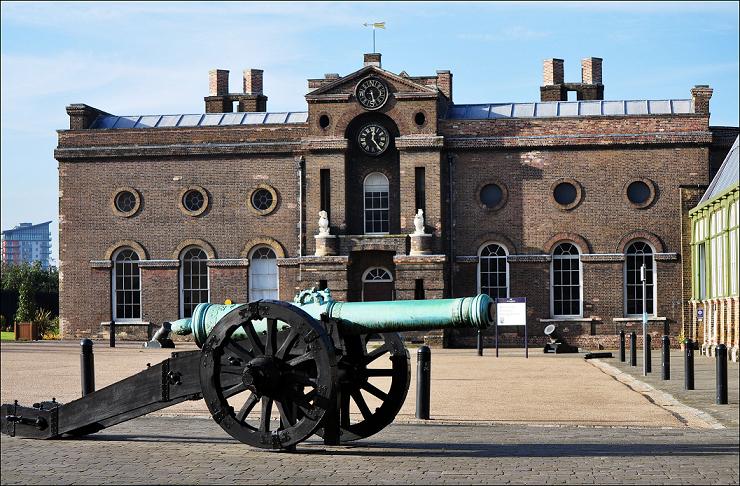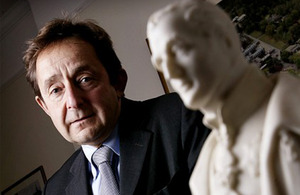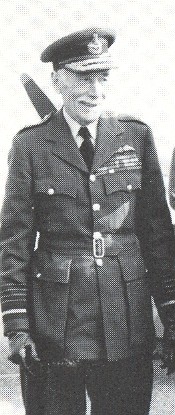|
Geoffrey Salmond
Air Chief Marshal Sir William Geoffrey Hanson Salmond, (19 August 1878 – 27 April 1933) was a senior commander in the Royal Flying Corps during the First World War. Remaining in the Royal Air Force after the war, he held senior appointments in the Middle East, Great Britain and India. In late 1928 and early 1929, he directed the evacuation from Kabul of British embassy staff and others, by air. In 1933, Salmond served as Chief of the Air Staff for only a matter of days before being taken ill and subsequently dying from cancer. Early life and education Geoffrey Salmond was born on 19 August 1878 to Major General Sir William Salmond and Emma Mary Salmond (née Hoyle). His siblings included a brother, John, and a sister Gwen. He was educated at Aysgarth School followed by Wellington College in Berkshire before joining the Army. Royal Artillery service Salmond joined the British Army, undertaking his officer training at Royal Military Academy Woolwich around 1897. He was c ... [...More Info...] [...Related Items...] OR: [Wikipedia] [Google] [Baidu] |
Air Chief Marshal
Air chief marshal (Air Chf Mshl or ACM) is a high-ranking air officer rank used by some air forces, with origins from the Royal Air Force. The rank is used by air forces of many Commonwealth of Nations, countries that have historical British influence. This rank is also equivalent to an Admiral in a List of navies, navy or a full general in an List of armies by country, army or other nations' air forces. The rank of air chief marshal is immediately senior to the rank of air marshal but subordinate to marshal of the air force. Air chief marshals are sometimes generically considered to be air marshals. Australia In the Royal Australian Air Force, this rank is only used when the Chief of the Defence Force (Australia), Chief of the Defence Force is an Air Force officer. When this is not the case, the senior ranking Air Force officer is the Chief of Air Force (Australia), Chief of Air Force, holding the rank of air marshal (Australia), air marshal. With the establishment of t ... [...More Info...] [...Related Items...] OR: [Wikipedia] [Google] [Baidu] |
Distinguished Service Order
The Distinguished Service Order (DSO) is a Military awards and decorations, military award of the United Kingdom, as well as formerly throughout the Commonwealth of Nations, Commonwealth, awarded for operational gallantry for highly successful command and leadership during active operations, typically in actual combat. Equal in Awards and decorations of the British Armed Forces, British precedence of military decorations to the Conspicuous Gallantry Cross and Royal Red Cross, since 1993 the DSO is eligible to all Military rank, ranks awarded specifically for "highly successful command and leadership during active operations". History Instituted on 6 September 1886 by Queen Victoria by Warrant (law), Royal Warrant published in ''The London Gazette'' on 9 November, the first DSOs awarded were dated 25 November 1886. The Order (distinction), order was established to recognise individual instances of meritorious or distinguished service in war. It is a military order, and wa ... [...More Info...] [...Related Items...] OR: [Wikipedia] [Google] [Baidu] |
Royal Military Academy Woolwich
The Royal Military Academy (RMA) at Woolwich, in south-east London, was a British Army military academy for the training of commissioned officers of the Royal Artillery and Royal Engineers. It later also trained officers of the Royal Corps of Signals and other technical corps. RMA Woolwich was commonly known as "The Shop" because its first building was a converted workshop of the Woolwich Arsenal. History Origins in the Royal Arsenal An attempt had been made by the Board of Ordnance in 1720 to set up an academy within its Arsenal (then known as the Warren) to provide training and education for prospective officers of its new Regiment of Artillery and Corps of Engineers (both of which had been established there in 1716). A new building was being constructed in readiness for the Academy and funds had been secured, seemingly, through investment in the South Sea Company; but the latter's collapse led to plans for the Academy being placed on hold. After this false start, the acad ... [...More Info...] [...Related Items...] OR: [Wikipedia] [Google] [Baidu] |
Wellington College, Berkshire
Wellington College is a co-educational public school providing education for boarding and day pupils in the village of Crowthorne, in Berkshire, in the United Kingdom. Wellington is a registered charity and currently educates roughly 1,100 pupils aged between 13 and 18. The college was built as a national monument to the military victory against Napoleon, and the political service as British Prime Minister, of the first Duke of Wellington, in whose honour it is named. It was established by Royal Charter in 1853. Queen Victoria laid the foundation stone in 1856, and inaugurated the school's public opening on 29 January 1859. Many former Wellington pupils fought in the trenches during the First World War, with a large number volunteering for military service immediately after leaving school. In all, 707 Wellington old boys lost their lives in the conflict. A further 501 former pupils were killed in action in the Second World War. The school is a member of the Rugby Group of ... [...More Info...] [...Related Items...] OR: [Wikipedia] [Google] [Baidu] |
Aysgarth School
Aysgarth School is an independent day and boarding preparatory school near to the village of Newton-le-Willows, North Yorkshire, England. As the name suggests, it was originally opened in the village of Aysgarth but was moved to Newton-le-Willows in 1890. History The school was opened in 1877 by the Reverend Clement Hales to prepare boys for a secondary school education. In 1890, the school moved to newly built premises costing £20,000 in the village of Newton-le-Willows but retained the name of Aysgarth School. The chapel was a new building too, but contained items from elsewhere, such as the pulpit which was originally from Easby Abbey near Richmond. Whilst the chapel on site is a listed building, the rest of the buildings remain unlisted due to a significant fire on site in 1933 which destroyed much of the school. The school is a preparatory school for selection to a range of private and independent schools across the United Kingdom and offers places to boys and girls betw ... [...More Info...] [...Related Items...] OR: [Wikipedia] [Google] [Baidu] |
Royal Flying Corps
The Royal Flying Corps (RFC) was the air arm of the British Army before and during the First World War until it merged with the Royal Naval Air Service on 1 April 1918 to form the Royal Air Force. During the early part of the war, the RFC supported the British Army by artillery co-operation and photographic reconnaissance. This work gradually led RFC pilots into aerial battles with German pilots and later in the war included the strafing of enemy infantry and emplacements, the bombing of German military airfields and later the strategic bombing of German industrial and transport facilities. At the start of World War I the RFC, commanded by Brigadier-General Sir David Henderson, consisted of five squadrons – one observation balloon squadron (RFC No 1 Squadron) and four aeroplane squadrons. These were first used for aerial spotting on 13 September 1914 but only became efficient when they perfected the use of wireless communication at Aubers Ridge on 9 May 1915. Ae ... [...More Info...] [...Related Items...] OR: [Wikipedia] [Google] [Baidu] |
Anne Baker (biographer)
Anne Baker (''née'' Salmond; born 14 May 1914) is a British writer of historical biographies, fundraiser and supercentenarian. Biography Baker was born Anne Salmond just before the outbreak of World War I, the daughter of Sir Geoffrey Salmond who later became the professional head of the Royal Air Force. She was educated at Lady Margaret Hall, Oxford, and lived with her father and mother in both Egypt and India. She married Valentine Baker (1910–1979) and has five children. She lives in Salisbury and turned 100 in May 2014. Baker received a merit award from the National Society for the Prevention of Cruelty to Children (NSPCC) at the charity's Salisbury fundraising branch on 28 April 2017 for more than 50 years of volunteer work. In July 2019, she was reportedly still fundraising at the age of 105. Baker was awarded an MBE in the 2021 New Year Honours for services to the NSPCC. In May 2024, she turned 110. She was deemed the oldest person in Wiltshire. Works *''Morning ... [...More Info...] [...Related Items...] OR: [Wikipedia] [Google] [Baidu] |
Gwen Salmond
Mary Gwendoline Salmond, also known as Gwen Salmond (1877–1958), was a 19th-century British artist. She was the daughter of Major General William Salmond and wife of Sir Matthew Smith. Early life Salmond was the daughter of Major General William Salmond and Lady Emma Mary H. Hoyle Salmond. She became an artist against the "strictly bourgeois plans" of her parents. Her siblings were Emma, Gladys, Geoffrey, and John.Irish Art Auction. Whytes. Retrieved 20 August 2014. Education Salmond studied at Slade School of Art where her friends included and[...More Info...] [...Related Items...] OR: [Wikipedia] [Google] [Baidu] |
John Salmond
Marshal of the Royal Air Force Sir John Maitland Salmond, (17 July 1881 – 16 April 1968) was a British military officer who rose to high rank in the Royal Flying Corps and then the Royal Air Force. During the First World War he served as a squadron commander, a wing commander and then as General Officer Commanding the RAF on the Western Front towards the end of the war. He went on to be Air Officer Commanding British Forces in Iraq in the early 1920s when he halted a Turkish invasion and sought to put down a Kurdish uprising against King Faisal, the British-sponsored ruler of Iraq. He was Chief of the Air Staff in the early 1930s and bitterly opposed the position taken by British politicians at the World Disarmament Conference in Geneva, which would have led to the UK's complete aerial disarmament. In the event the talks broke down when Adolf Hitler withdrew from the Conference in October 1933. Early life John Salmond was born the son of Major General Sir William Salmon ... [...More Info...] [...Related Items...] OR: [Wikipedia] [Google] [Baidu] |
William Salmond (British Army Officer)
Major General Sir William Salmond, (25 August 1840 – 8 November 1932) was a British Army officer. Military career Grandson of Major General James Hanson Salmond, Military Secretary to the East India Company and author of ''The Mysore War'', William Salmond was born the son of Lieutenant Colonel James Salmond (1805–1880) and Emma Isabella Coke (d. 1886), daughter of D'Ewes Coke (1774–1856) and Harriet Wright. He studied at the Royal Military Academy, Woolwich, and was commissioned into the Royal Engineers in October 1857. Salmond was appointed an Instructor in Musketry in November 1872 and took part in the Anglo-Egyptian War in 1882, during which he was mentioned in despatches. He became Assistant Director of Works (Barracks) at the War Office in April 1883, Assistant Adjutant-General for the Royal Engineers in October 1884 and Assistant Quartermaster-General in April 1886. He went on to be Commander, Royal Engineers for the Home District in July 1890, Deputy Inspector-Ge ... [...More Info...] [...Related Items...] OR: [Wikipedia] [Google] [Baidu] |
Order Of The Redeemer
The Order of the Redeemer (), also known as the Order of the Saviour, is an order of merit of Greece. The Order of the Redeemer is the oldest and highest decoration awarded by the modern Greek state. Establishment The establishment of the Order of the Redeemer was decided by the Fourth National Assembly at Argos in 1829, during the final year of the Greek War of Independence. The decision was not immediately implemented, however, and the relevant decree was signed in Nafplio by the Regency Council ( Josef Ludwig von Armansperg, Karl von Abel and Georg Ludwig von Maurer) in the name of King Otto on May 20, 1833. According to the decree of establishment, the name of the Order "shall recall the, by divine assistance miraculously and fortuitously accomplished, salvation of Greece". Grades and award criteria Since its establishment in 1833, and in common with all Greek orders of merit, the Order of the Redeemer has five classes: * ''Grand Cross'' () – wears the badge of the ... [...More Info...] [...Related Items...] OR: [Wikipedia] [Google] [Baidu] |



